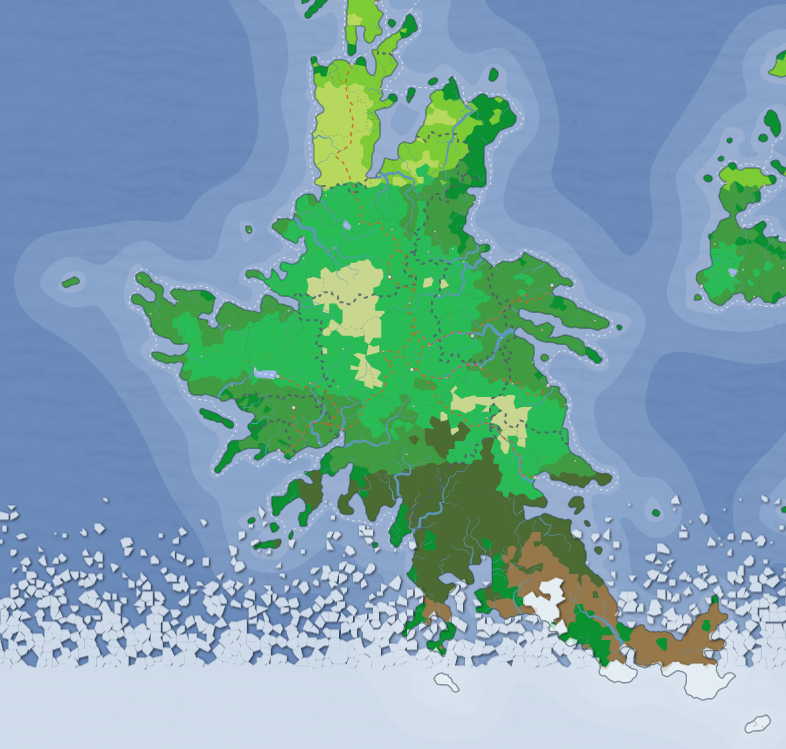Iasteron
Geography
Located south of Qevrun, separated by the Hurirug Narrows, and west of Erwā, Iasteron is geographically 3°S - 60°S and 102°W - 57°W.
Iasteron is described by tourist brochures as 'the butterfly continent' - the central spine of the continent is the Nutŭrlŭachyulada mountian range, with the pains to either side spreading out like wings. While this description is, strictly speaking, inaccurate (the 'wings' are asymmetrical, and the mountains fork in the north of the country), Iasteron is now inextricably associated with butterflies in the minds of foreigners.
The Nutŭrlŭachyulada mountains contain three active volcanos - Qubivʾčuyoevʾ in Pania, and Téwnarfng-rmópókng and Binorwnes in Lephidia. A fouth volcano, Mumŭwkuamnu in southern Ulŭsukia, is believed to be dormant.
Ecosystem
The lower third of the continent is mostly uninhabited tundra and mountains, occupied mostly by hunters, trappers, and herders, with a few outlying fishing communities.
The temperate region in the middle is extremely wet, with a large number of rivers, streams, and small lakes. This is the famed 'butterfly country', starting with the summer breeding ground of the íntwnōdaskalgu blutterfly in the lowlands of Bybdema county in central Lephidia, and extending all the way to the northern tip of Ctelia's Duria peninsula, which houses the only known feeding ground of the elusive har-ne-chyuged-il butterfly.
History
The earliest evidence for the yutaaq people is found around the Kuurtorsuaqa delta in the Namakakatuut region of Lephidia. Cave drawings and fossiliised remains of prehistoric esaanla have also been found, suggesting a historic relationship between the two people, although the nature of this reationship remains unclear.
Tourism
All countries of Iasteron are part of the Open Iasteron project, and citizens are permitted to travel between all participating countries freely. Consequentially, intra-continental tourism is very popular, particularly south-to-north during the late winter/early spring.
The Ulŭsukian winter festivals are especially well attended, with tens of thousands of tourists attending a month-long midwinter festival, ŭamtʼŭggŭkŭru, boasting sprawling markets, traditional food and drink from across the country, and folk music. The high point of the midwinter event is the winter solstice, the mid-point of the long night, which is marked with participants and temples ringing bells, fireworks, and re-lighting candles and lanterns after a period of darkness.
A more local event is the winter-end festival, telranpŭlluaqŭw, which welcomes the first dawn after the solstice. As this is a rolling event, with dawn coming later at lower latitudes, it attracts fewer tourists, but many Chyiulsŭkiaaw visit family to celebrate.
Type
Continent
Included Locations
Related Tradition (Primary)
Related Professions
Languages
- Gihilish
- Žomi
- Chyhrí
- Taqut
Demonym
Single / plural- Iasteron-an / Iasteron-an-il (Ghilish)
- Iasteronārd / Iasteronārdeʾ (Žomi)
- Iasteronis / Iasteronisí (Chyhri)
- Iasteronaw / Chyiiasteronaw (Taqut)
Remove these ads. Join the Worldbuilders Guild



Comments